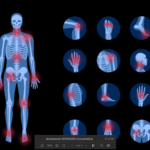NEW YORK (Reuters Health)—Mortality rates in patients with antineutrophil cytoplasmic autoantibody-associated vasculitis (AAV) decreased from 1999 to 2017, according to records from the Centers for Disease Control and Prevention (CDC).
“The mortality attributed to several rare diseases [e.g., hypersensitivity pneumonitis] has increased in recent years,” Alexander W. Steinberg, MD, from Saint Joseph Hospital, Denver, tells Reuters Health by email. “However, for AAV, we see the opposite trend, with decreasing mortality.”
Immunosuppressive therapy has been the mainstay of treatment of active AAV since the 1950s, and a meta-analysis covering 10 studies between 1980 and 2005 suggested that AAV-related mortality had improved.
Dr. Steinberg’s team used data from CDC’s Wide-ranging Online Data for Epidemiologic Research Database to examine contemporary mortality trends of AAV in the U.S.
From 1999 to 2017, there were 11,316 AAV-related deaths, for an age-adjusted mortality rate of 1.86 per 1 million persons.
The mortality rate per 1 million persons was highest among non-Hispanic whites (2.03 vs. 0.77 for non-Hispanic blacks and 1.57 for Hispanics); among men (2.13 vs. 1.65 among women); among Midwesterners (2.15 vs. 2.01 in the West, 1.70 in the South, and 1.66 in the Northeast); and among persons aged 75 to 84 years.
During this period, the mortality rate decreased by an average of 1.6% per year, with an even greater decrease among patients aged 65 to 74 years (2.5% per year), the researchers report in Annals of Internal Medicine, online Oct. 8.1
Granulomatosis with polyangiitis accounted for 85% of the AAV deaths, and the most common underlying cause of death was the vasculitis itself (64%), followed by cardiovascular disease (12%), cancer (6%) and pulmonary disorders (5%).
Decreasing mortality trends were similar when stratified by sex, race and geographic region.
“We speculate that the decrease in the overall mortality, and mortality particularly among persons aged 65 to 74 years, during the study period may reflect increased longevity due to improved treatment of AAV and common comorbid conditions,” Dr. Steinberg says.
“It is impossible to directly identify causality from mortality data in a way that might guide future therapeutic choices,” he says. “We think the trend toward improving mortality suggests the medical community is working in the right direction and we should continue to strive to diagnose and treat these diseases and their comorbidities. Furthermore, the current mortality level suggests that more clinical research into improved treatment is warranted.”
“We hope physicians reading our research come away with a reminder that these diseases, particularly granulomatosis with polyangiitis, still lead to significant mortality despite improvements,” Dr. Steinberg says. “We also hope to spark curiosity and investigation into what is driving these changes and the trends we demonstrate in regional, ethnic, and age group mortality.”


